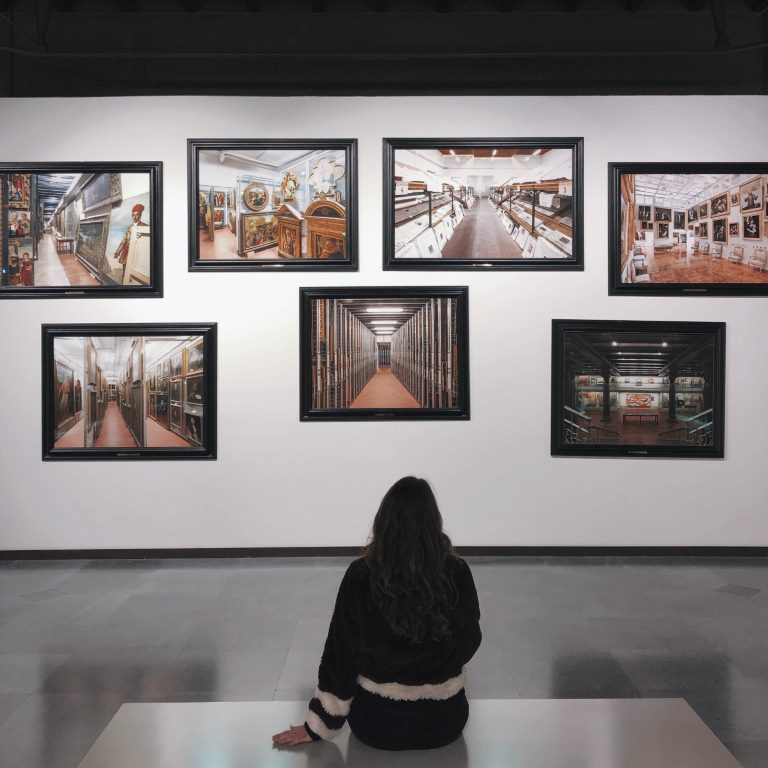Valencia, the third-largest city in Spain, is a true gem when it comes to culture, art, and history. One of the best ways to experience these elements is by visiting the incredible museums that the city has to offer. From contemporary art to ancient history, Valencia’s museums have something for everyone. In this post, we’ll explore some of the best museum visits in Valencia that you won’t want to miss. Whether you’re a history buff, an art lover, or simply looking to explore Valencia’s rich culture, there’s a museum for you in this beautiful city. So let’s dive in and discover the best museums that Valencia has to offer!
The 2 Best Museums in Valencia
The 2 Best Museums in Valencia
1. Valencia L Oceanografic Sea Life Center Ticket

Valencia’s Oceanogràfic Sea Life Center is the perfect destination for anyone interested in marine life. As the largest aquarium in Europe, it features over 45,000 creatures from more than 500 species, giving visitors a unique and immersive experience. Marvel at sea lions, penguins, walruses, sawfish, and many more as you wander through the world’s aquatic ecosystems.
One of the highlights of the tour includes travelling through the longest underwater tunnel in Europe, where you can come face to face with sharks and other marine creatures. The center also houses a family of beluga whales, providing an unforgettable experience for all ages.
With the general admission ticket, visitors have access to all exhibits, and food and drinks are also available. Whether you’re passionate about marine biology or just curious about the fascinating world beneath the waves, Valencia’s Oceanogràfic Sea Life Center is a must-visit destination.
2. Valencia Principe Felipe Science Museum Entry Ticket

Learn about science and space in an interactive, informative, and entertaining way with a full-day admission to Valencia’s Principe Felipe Science Museum, located in the City of Arts and Sciences. Designed by Santiago Calatrava in the form of a whale’s skeleton, the museum aims to bring science and technology closer to the public in an amusing way. Explore the worlds of space and science and touch and feel exhibits to learn scientific facts with stunning surroundings. Don’t miss the Electricity Theatre, where a slightly crazy inventor demonstrates the principles of electricity in front of an auditorium with seating for up to 50 people. Additionally, learn about climate change, biometrics, and more. The motto of the museum is “Forbidden not to touch, feel, and think,” and you’re invited to do just that throughout your visit.
Frequently Asked Questions About Valencia, Spain
Located on the east coast of Spain, Valencia is a beautiful and vibrant city filled with history, culture, and stunning architecture. As a popular tourist destination, it’s not surprising that many people have questions about Valencia before they visit. In this post, we’ll answer some of the most frequently asked questions about Valencia.1. What Is the Best Time to Visit Valencia?
The best time to visit Valencia depends on what you want to do and see. If you’re interested in the famous Fallas festival, which takes place in March, then March is the best time to visit. If you’re looking for warm weather and sunny days, then the summer months of July and August are ideal. However, be prepared for large crowds and higher prices during this time. Spring and early autumn are also great times to visit as the weather is still warm, and there are plenty of cultural events and festivals to enjoy.2. How Do I Get to Valencia?
Valencia is accessible by air, train, and bus. The Valencia airport is located just outside the city and serves many international and domestic flights. It’s also easy to reach Valencia by train from other parts of Spain, with regular connections from Madrid, Barcelona, and other major cities. If you’re on a budget, taking the bus is usually the most affordable option, with frequent services to Valencia from major Spanish cities.3. Do I Need a Visa to Visit Valencia?
If you’re a citizen of the European Union, you don’t need a visa to visit Valencia. Citizens of many other countries, such as the United States, Canada, and Australia, can visit Spain for up to 90 days without a visa. However, it’s always best to check with the Spanish embassy or consulate in your home country to confirm the requirements for your specific situation.4. What Are the Must-See Attractions in Valencia?
Valencia is home to many amazing attractions, but some of the must-see places include:- The City of Arts and Sciences
- The Valencia Cathedral
- The Central Market of Valencia
- The Turia Gardens
- The Silk Exchange
5. What Is the City of Arts and Sciences?
The City of Arts and Sciences is a complex of futuristic and stunning buildings that house some of Valencia’s top tourist attractions, including an opera house, a science museum, a planetarium, and an aquarium. It’s a must-see destination in Valencia, offering something for everyone, regardless of age.6. What Is the Fallas Festival?
The Fallas festival is a famous celebration in Valencia, which takes place every year between March 15 and 19. It’s a festival of fire, where huge and elaborate wooden sculptures are created and then burned. The festival is a time of great energy and excitement, with music, fireworks, and parades filling the streets.7. What Is Valencia Known For?
Valencia is known for many things, including:- Paella, a delicious and traditional Spanish dish made with rice, saffron, and various meats and seafood
- The City of Arts and Sciences
- The Fallas festival
- The Valencia Cathedral
- The Turia Gardens
8. Is Valencia a Safe City?
Valencia is generally considered a safe city for tourists, with low crime rates and friendly locals. However, as with any popular tourist destination, it’s important to take precautions to avoid becoming a victim of crime. Be aware of your surroundings, especially at night, and keep your belongings close to you.9. How Can I Get Around Valencia?
Getting around Valencia is easy thanks to its efficient public transportation system. The city has a network of buses and trams that connect all parts of the city, as well as a subway system. Taxis are also plentiful in Valencia, and they’re a good option if you need to get somewhere quickly or if public transportation is not available.10. What Are Some Local Customs to Be Aware of in Valencia?
When visiting Valencia, it’s important to be aware of the local customs and etiquette. Here are some things to keep in mind:- Valencians consider lunch to be the most important meal of the day, so many restaurants offer a menu del dia, which is a set menu that includes several courses.
- Valencians are generally friendly and outgoing, so don’t be afraid to strike up a conversation with locals.
- Tipping is not necessary in Valencia, as service charges are already included in the bill.
How to spend your time as a tourist in Valencia
Valencia is one of the most popular tourist destinations in Spain. It is a city filled with amazing history, culture, and delicious food. As a tourist, there are many things to do and explore in this beautiful city. In this guide, we will provide you with a detailed itinerary and useful tips on how to spend your time in Valencia.Day 1: Explore the Old Town
Valencia’s old town is a maze of narrow streets, quaint squares, and beautiful architecture. The first day of your trip should be spent exploring this area. Here are some of the must-visit places in the old town:1. Plaza del Ayuntamiento
Start your day at the Plaza del Ayuntamiento, Valencia’s central square. This is a great place to grab a coffee or breakfast and plan your day. Admire the City Hall and the beautiful fountain in the center of the square.2. Valencia Cathedral
Valencia Cathedral is one of the most important landmarks of the city. It is a stunning Gothic-style building with impressive artwork and architectural details. Make sure to climb the tower to enjoy the panoramic views of Valencia.3. Mercado Central
Mercado Central is one of the oldest and largest indoor markets in Europe. It is filled with vendors selling fresh produce, seafood, and meat. This is a great place to buy local products and enjoy a traditional Valencian meal at one of the market’s restaurants.4. Plaza Redonda
Plaza Redonda is a unique circular square lined with colorful shops selling traditional Valencian souvenirs. It is a great place to find a unique gift for your loved ones back home.Day 2: Visit the City of Arts and Sciences
The City of Arts and Sciences is a modern architectural complex that showcases Valencia’s futuristic side. It is a must-visit place for all tourists in Valencia.1. Oceanogràfic
Start your day by visiting the Oceanogràfic, the largest aquarium in Europe. It is home to over 45,000 marine creatures and is divided into different aquatic environments such as the Mediterranean, the Arctic, and the Red Sea.2. Hemisfèric
The Hemisfèric is a stunning planetarium and IMAX cinema. It has a large curved screen that takes you on a journey through the universe. This is a great place to learn about astronomy and enjoy a unique cinematic experience.3. Museu de les Ciències Príncipe Felipe
The Museu de les Ciències Príncipe Felipe is an interactive science museum that is perfect for families and kids. It has over 26,000 square meters of exhibits and hands-on activities that explore different scientific fields.Day 3: Beach and Paella
Valencia is known for its delicious paella and beautiful beaches. Spend your last day in Valencia enjoying both.1. La Malvarrosa
La Malvarrosa is one of the most popular beaches in Valencia. It has golden sand and crystal-clear water. This is a great place to relax and soak up the Mediterranean sun.2. El Palmar
El Palmar is a small village near Valencia that is famous for its paella. Take a short trip there and enjoy a traditional Valencian paella at one of the local restaurants.3. Albufera Natural Park
Albufera Natural Park is a wetland park located near Valencia. It is a great place to go hiking, birdwatching, or take a boat tour of the lagoon.Useful Tips for Tourists in Valencia
Here are some additional tips to make your trip to Valencia even more enjoyable:1. Use Public Transportation
Valencia has an efficient public transportation system that includes buses, trams, and a metro network. Purchase a Tourist Card that includes unlimited rides on public transportation and discounts on museums and attractions.2. Try the Local Cuisine
Valencia is known for its delicious cuisine. Make sure to try the local paella, a rice dish that is cooked with saffron, vegetables, and your choice of seafood, chicken or rabbit.3. Dress Appropriately
Valencia is a sunny city, so make sure to wear comfortable clothing and shoes. It is also a conservative city, so avoid wearing revealing clothing when visiting churches or other religious buildings.4. Learn Some Spanish Phrases
Although English is widely spoken in Valencia, learning some basic Spanish phrases will help you communicate with locals and navigate the city more easily.5. Watch Out for Pickpockets
Like in other tourist destinations, pickpocketing can be a problem in Valencia. Make sure to keep your valuables close to you and watch out for suspicious people in crowded areas.Conclusion
Valencia is a beautiful city with something for everyone. Whether you are interested in history, art, science, or just want to relax on the beach and enjoy delicious food, Valencia has it all. Follow this itinerary and tips and you will have an unforgettable trip to this wonderful destination.
Table of Contents
Table of Contents

